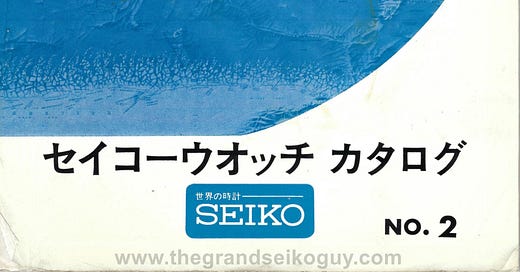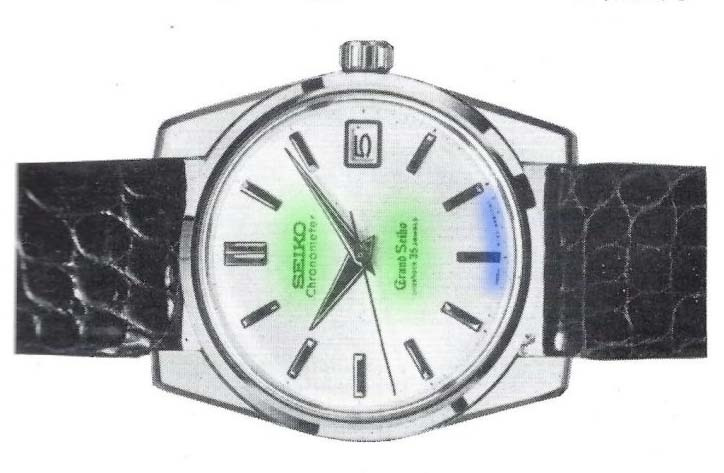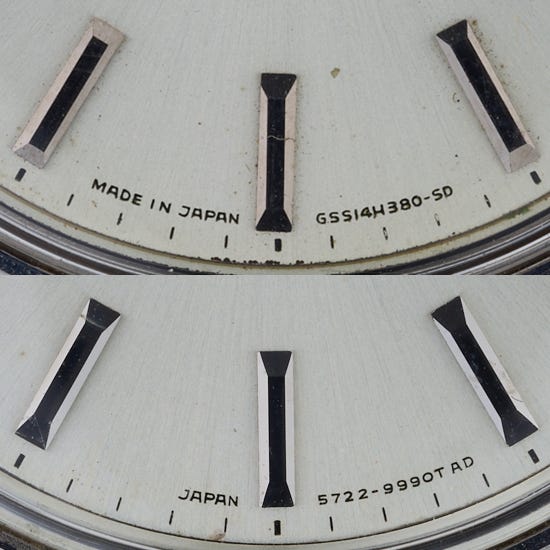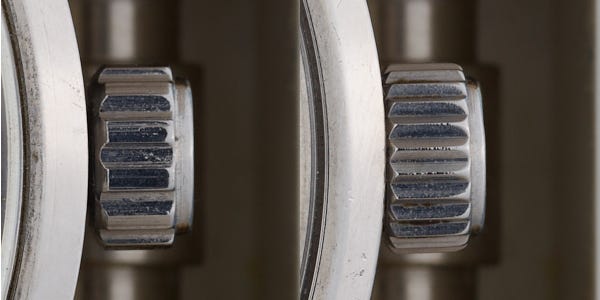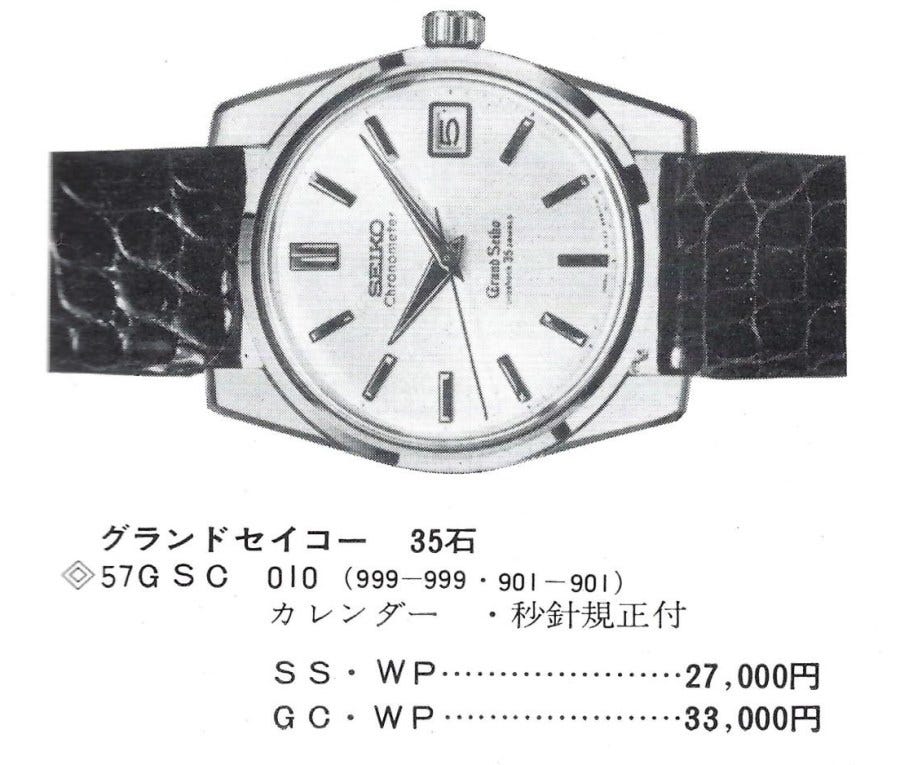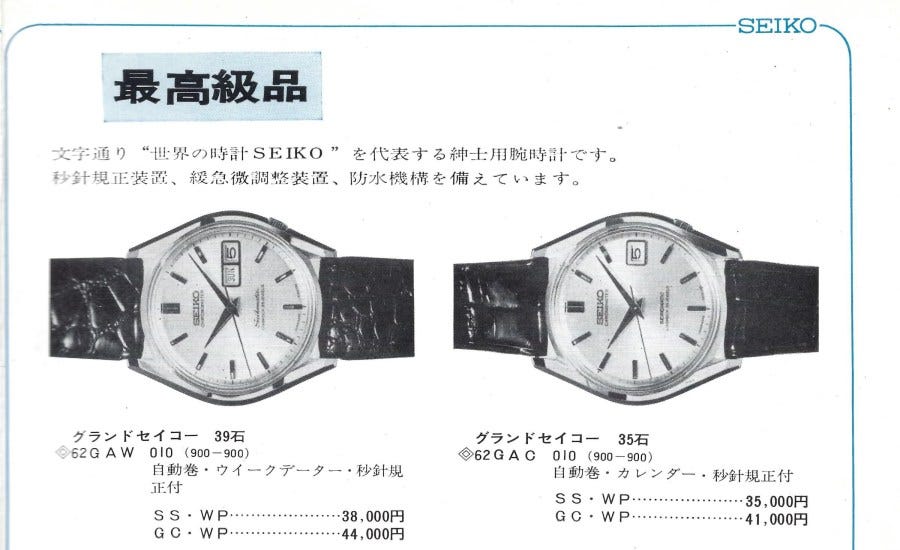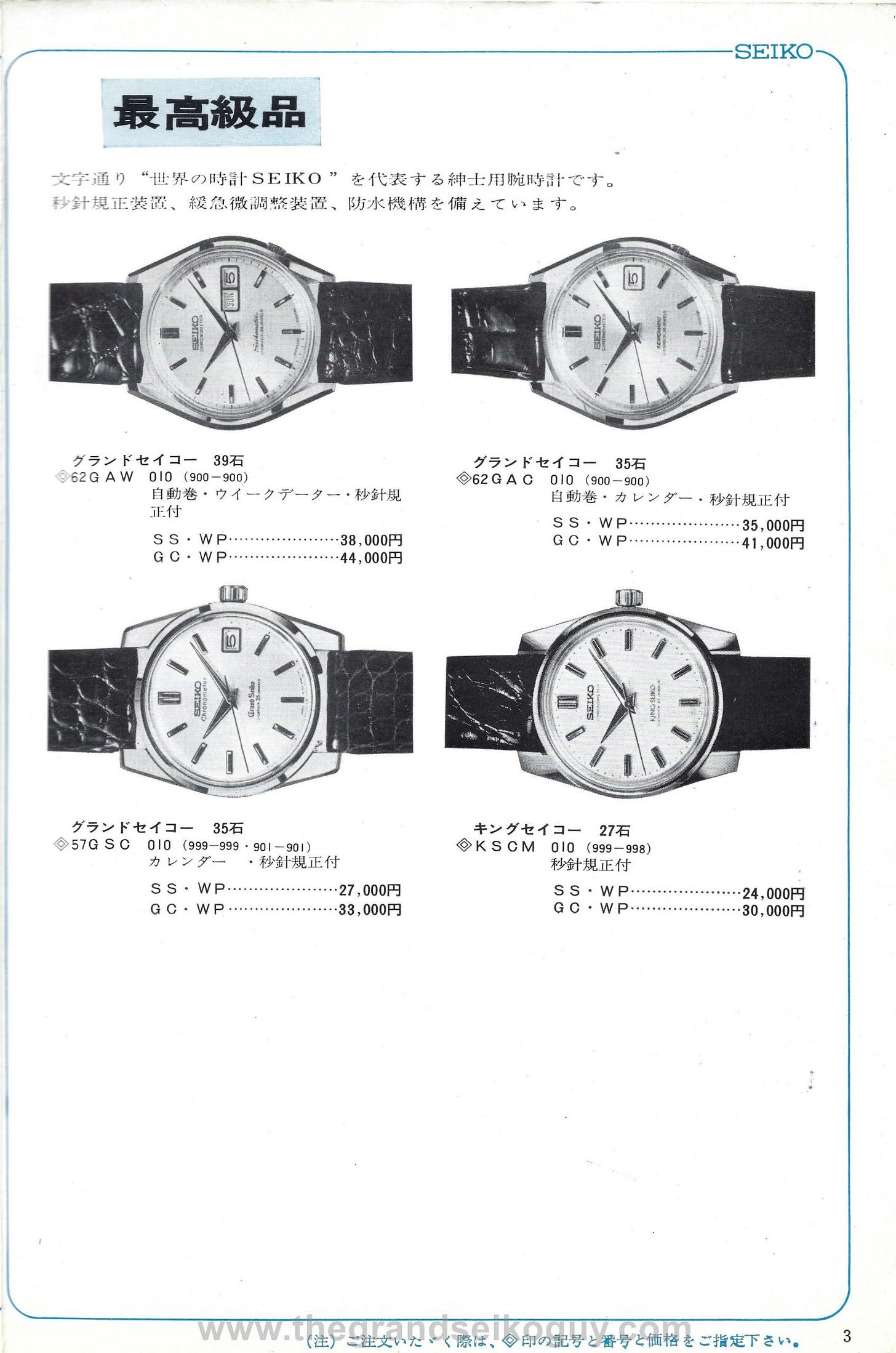The Seiko 1967 no. 2 catalogue
When the article on this catalogue was originally published on the TGSG website, there remained quite some confusion regarding the publication history of Seiko catalogues in the mid-late 1960’s.
Following that article’s original publication, a visit to the Seiko Museum in Tokyo enabled me to to finally get my head around exactly what was going on, and a long pre-amble was added to the beginning of the post.
Rather than repeat the full learning experience and rationale here, I will take this opportunity to briefly summarize the conclusions of my research.
In 1966, two catalogues were published - the “Number 1” catalogue, and a supplement to it.
Then, in 1967, the catalogue pictured above was published and, as is evident from the cover scan above (and of even more obviously from the title of this post), it was titled “Number 2”. As we will see in next week’s newsletter, there was also a supplement to this catalogue published later in the year. Following that, the catalogue numbering/presentation was changed.
Grand Seiko 5722-9990/9010
Whilst there is only a single photo of a Grand Seiko in this catalogue – used to represent two variants of the reference – there are a number of fascinating things to be learned from the page on which it is featured. As we are about to discover, things aren’t quite what they seem at first glance.
The photograph shows a 57GS series reference – specifically, it is the 5722-9990, and an early example at that. We can tell this from two subtle things noticeable in the photograph.
Firstly, the main textual content on the dial (shaded in green in the above photo) matches that of the 43999 and 5722-9990.
The way we can tell it is the 5722-9990 and not the 43999, is because whilst the dial code (shaded in blue) at the bottom is not legible, the structure of the text around the 6 o’clock index is clear. Note that there is very little text to the left of the index, whilst that to the right stretches almost all the way around to the 5 o’clock index.
The photo above shows a comparison of the text around the 6 o’clock index for the 43999 (in the example used, the SD version), and the 5722-9990. 43999’s had the text “Made in Japan” to the left of the index, whereas on the 5722-9990, it was just “Japan”.
Looking carefully at the catalogue, it is clear from the text to the left of the 6 o’clock index – even though not legible in the low resolution printing – that the photo is of the 5722-9990.
The second thing of interest about the image enables us to identify it as an early example of the 5722-9990 – certainly much earlier than the latter half of 1967 when the catalogue was published.
Whilst it is not clear exactly when, at some point during the production of the 57GS series – which started with the 43999 SD dial variant in the last quarter of 1963, and continued through to 1968, by which time the steel cased examples were on their third and final iteration, the 5722-9991 – the design of the crown was changed.
The early crown variant is what we refer to as “coarse knurled”, and the latter variant is what we refer to as “fine knurled”. The difference can be clearly seen in the following comparison between the two.
On the left is an example of a coarse knurled crown, and on the right, the fine knurled.
These crowns are interchangeable, and indeed they even share the exact same part number (55W31N), so clearly at some point in the production life Seiko simply superseded the part with a different design. Given that they share the same part number, it is not surprising to find examples of 43999’s and 5722-9990’s with the later fine knurled crown, rather than what we could consider to be the “correct” coarse knurled example. For any example of the 57GS series watch being serviced after the mid-1960’s, only the fine knurled crown would be available if a replacement needed ordering.
The image in the catalogue clearly shows a watch with the earlier coarse knurled crown. We would consider this to be the correct crown for the entire run of the 5722-9990, but at the very least, it would identify the watch photographed as being an “early” example of the reference.
The fact that a catalogue from 1967 shows an image of an early 5722-9990 and not the contemporary 5722-9991 is probably simply down to Seiko being a little “lazy” with their product photography and not updating the catalogue shots with photographs of the most current variants. Based on the production dates – as provided by the first two characters of the case serial numbers – of countless 57GS series watches I have seen, were you to have visited a retailer in 1967 to purchase a 57GS, I suspect the reference available would have been the 5722-9991.
This was the last time a Grand Seiko with the word “Chronometer” on the dial was appeared in a catalogue.
And on the subject of “Chronometers”, it is interesting to note that the only Grand Seiko pictured in this catalogue is a 57GS, with the image used to promote both the 27,000 Yen stainless steel cased 5722-9990, and the 33,000 Yen cap gold cased 5722-9010 variants.
And yet…
The first row of the catalogue shows two watches –
Now, this is where things get a little complicated.
The images are very clearly photographs of the 6245-9000 and 6246-9000 Seikomatic Chronometers. Around the middle of 1966, these Seikomatic Chronometers evolved into the 62GS series, so it is somewhat surprising to see the Seikomatic’s being featured in the 1967 catalogue.
However, if we look at the catalogue codes detailed for the watches, we discover that they are Grand Seiko catalogue codes. 62GAW 010, and 62GAC 010.
The first two characters of the indicate the movement series, but it is the third character, “G”, which is crucial, and identifies the watch as being a Grand Seiko.
For those who can read Japanese, it’s even more obvious that what Seiko are representing in this catalogue are the 62GS references, as the Kanji text above the catalogue code translates to “Grand Seiko”.
So – whilst there is only a single photo of a Grand Seiko shown in this catalogue, representing two case material variants of the same base reference – there are actually four other Grand Seikos detailed, but illustrated with the wrong watch.
I think it’s highly unlikely that Seiko were actually selling the Seikomatic Chronometer as a Grand Seiko to the general public – it just seems too weird a thing to do from a marketing perspective. But clearly the catalogue would imply the opposite. A “regular” Seiko is pictured alongside catalogue codes and descriptions clearly indicating “Grand” Seiko. Is this just a mistake, or perhaps – as evidenced by the 5722-9990 pictured in the catalogue – were Seiko being a little lazy with providing up-to-date product photography for the catalogues?
If anyone has any further insight into this, please do get in touch. Probably the only thing that would prove the Seikomatics were actually being sold “as” Grand Seikos would be if someone could provide an example of a Seikomatic Chronometer with Grand Seiko paperwork (the certificate for the 62GS series does include both case and movement serial numbers on it), but I rather doubt such a thing exists.
The 62GS series actually had a total of ten variants over its short lifespan.
The first eight variants are relatively simple to explain. There are two movements – the day-date 6246, and the date only 6245; two case materials – stainless steel, and gold cap; and two different versions of the case back medallion – one featuring a lion, and one the GS logo. All combinations of these variants exist, and so 2x2x2 gives us 8.
The final variants are very rare – 6246-9001’s exist in both stainless steel and cap gold cases featuring different hands and indices, and a -9010 dial code.
Seiko did not differentiate the steel and cap gold cased variants by either model or catalogue number (something that must have been a little confusing for any retailer placing orders for the watches!), and all four references had different case numbers depending on the year of production. 1966 production can be identified by the 6245/6-9000 case number, and 1967/8 production is identified by the 6245/6-9001 case number.
The 1966 production -9000 watches are generally considered to be the more desirable as they have the lion case back medallion, rather than the GS logo featured on the 1967/8 production.
Gallery
Presented below is a scan of the single page from the Seiko No. 2 Catalogue (1967) that features Grand Seiko watches.

